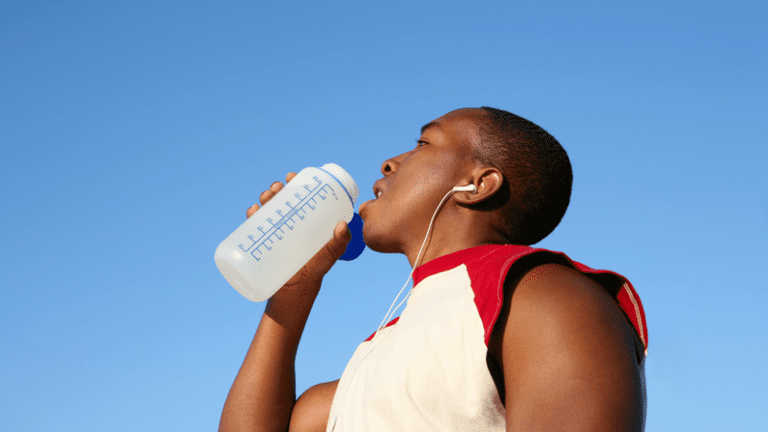When you’ve got an all-day competition, whether in baseball or any other sport, the most important thing you can do is prepare and prepare for the maximum. Some all-day events are planned-out like doubleheaders and round robin tournaments, but most are win to advance, lose and you’re out. Prepare to make it to that final round not just how far you think you’ll go. This mentality helps physically and also mentally with the mindset to win. It’s difficult enough to face a tough opponent, but when you’re not prepared, you’ll be playing against yourself also. This article will highlight the main points of staying healthy and competitive during those all-day events.
The main tips:
- Be prepared
- Fueling
- Warm up
- Proper clothing
- Training
1- Being prepared is the key to success. Plan out the days events and organize appropriately. If the competition will last from day into the night, prepare for the weather change throughout the day. If there’s wet weather in the forecast, bring a change of clothes so you’re not waiting around all wet. Prepare for the unexpected! A delay of some sort or an extra inning game could add significant time to your day. I’ve had some athletes tell me that they knew they didn’t play their best because of an unexpected delay they weren’t prepared for.
2- Control what you consume! Bring your own forms of fuel and don’t plan on “grabbing something between games”. Especially if you are playing away and don’t know the area well, there might not be a food store within the time you have between games. Also, often when relying on grabbing food to go, the most convenient place is a fast food restaurant with negative nutritional value that could lead to decreased performance.
- Hydration is a necessary factor for all-day competitions. As little as a 2% loss of water will cause symptoms of dehydration to take effect. Here are a couple points to avoid dehydration:
- Drink fluids the night before and first thing in the morning prior to arriving- Drinking 16oz. the night before and the morning of will help start you off on a positive note. This pre-competition planning will go a long way.
- Drink during the day- Drinking 4-8 oz. every 15-20 minutes during competition and practice is vital to staying sharp on the field.
- Don’t wait until you’re thirsty. Thirst mechanism is your body telling you it is dehydrated, not a warning to avoid it. You must keep drinking before you get thirsty and not wait.
- Have fluid readily available- Athletes generally won’t seek out fluids and are much more likely to drink the appropriate amount if it’s in sight and readily available.
- Stay away from caffeine and carbonated drinks- These drinks will not sufficiently keep you hydrated and could have negative effect throughout the all-day competition.
- Sports drinks for fuel- With competitions lasting more than 90 minutes, sports drinks can be a good source of fluid and fuel. The carbohydrates in sports drinks will help maintain your endurance throughout the day.
Fluids alone will not be sufficient; you also need to prepare meals throughout the day with content and timing of these meals being vital. Meals should be prepared in between practices or competitions. Snacks should be prepared and planned to be consumed after warm-up or during games. Glycogen is the main form of energy throughout the day and with the glycogen reserves being depleted throughout the all-day competition, you need to continuously replenish with carbohydrates.
Pre-game meals should “fill up the car” sufficiently to start, but snacks are necessary to maintain a level of fuel and not “run out of gas”. As a general rule, an athlete should eat a pre-game meal primarily consisting of carbohydrates and then replenish with a small snack every hour. Especially for all-day competitions when you will be starting in the morning it is important for your pre-competition fueling to begin the night before with a full hearty dinner. This is essential since you probably won’t have enough time in the morning to fuel up completely prior to competition.
3- Warm up with a purpose. You should have specific warm-up routines for different circumstances. Your every-day warm-up might be 30-45 minutes, but you should have a condensed 15- minute warm-up planned for when you have an all-day competition. The focus should be a general full-body movement like jogging or jumping rope to elevate the body temperature and heart rate for 5-10 minutes, and then perform several movements specific to the sport like lunges, trunk twists, shoulder tubing exercises for throwers, shuffling and sprinting.
If you have a short break between competitions, you’re better off staying warm than just sitting around. This means for the 20-40 min between events you should perform movements intended to keep your core temperature elevated, your heart rate elevated and your muscles warm. Some good low intensity movements are:
- slow jog/walk
- light swinging or tossing
- dribbling the soccer ball
- dynamic flexibility exercises
- team skills games
When you have longer breaks between events you should be sure to cool down properly and more importantly, warm up again prior to competing or practicing again. A sufficient cool down consists of 10-15 minutes of static stretching to relax the muscles and decrease heart rate. This will help conserve energy and recover.
Overall, the main message is that some form of dynamic/moving warm up needs to be performed prior to each practice/competition throughout the day. Incidence of injury is increased when an athlete is cold and goes right into the sport. It is also proven that the risk of injury is increased when an athlete performs static stretching or “cool down” stretching where they are holding the stretch while relaxing the muscles prior to activity.
4- Know your environment. With all-day events you must consider the change in environment and how it will affect your warm-up, in-game performance, and cool-down. As described earlier, staying “warm” between short breaks is just that. Clothing will help, along with those low intensity movements, to keep warm. You should wear layers to cover your body and maintain an elevated body temperature when you are not active. In contrast, during summer months, changing out of your uniform and into shorts will help you conserve energy between competitions. A general tip is to bring a change of clothes for between competitions. Whether you are competing in cold weather or the summer months, changing out of sweaty undershirt will help maintain a healthy body temperature.
5- Physical training and preparation. I always tell my athletes “two competitors of equal skill, the stronger/better conditioned athlete will always win”. This is very evident in all-day competitions. Off-field strength and conditioning translates to on-field power, agility and endurance. The off-season is the time when an athlete gets to train and focus on improving strength, flexibility, quickness, power, and endurance. The athletic position is relevant in every sport, and core and lower body strength are the main components of a strong athletic position. A breakdown in the athletic position from fatigue will lead to sloppy play and increased risk of injury.
After understanding these 5 main points and adapting them to your specific competition, you should have a better understanding of what is necessary to maintain performance and how to stay healthy throughout an all-day competition. You might not be able to control your opponent, the referees, or the timing between competitions, but there are many things that you can control to help maximize your performance. Knowing you are prepared for the full day will help make it easier to focus on the competition and have fun throughout the whole day.
How useful was this post?
Click on a star to rate it!
Average rating 5 / 5. Vote count: 1
No votes so far! Be the first to rate this post.



